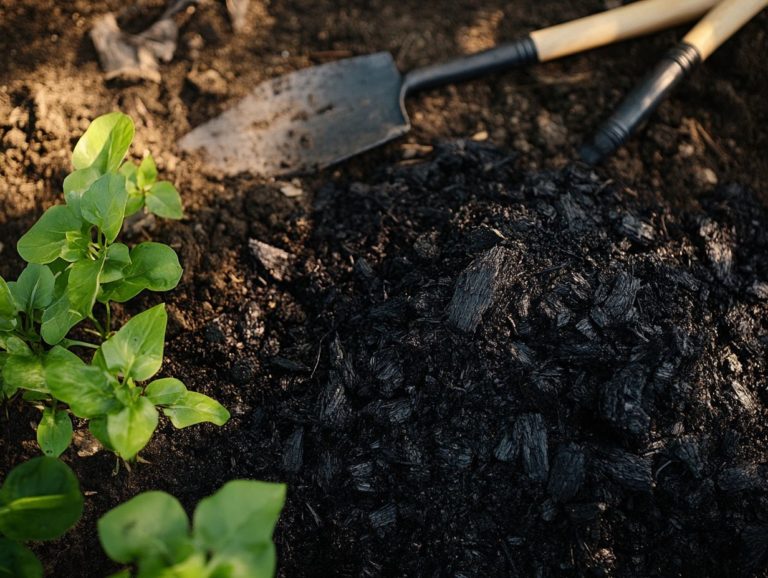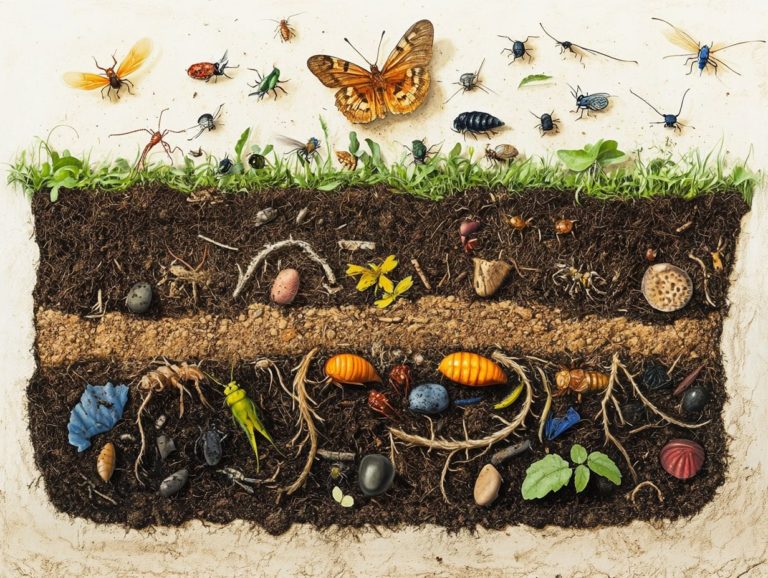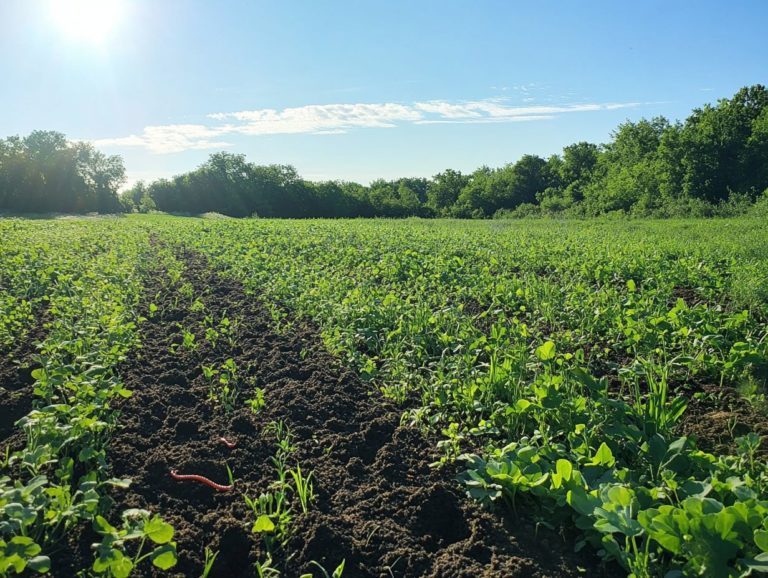How to Utilize Earthworms for Soil Health
Soil health forms the bedrock of thriving ecosystems and sustainable agriculture.
In this article, you will explore the myriad benefits of healthy soil and uncover the vital role that earthworms play in enhancing it. Discover different species of earthworms, effective methods to improve soil quality using these remarkable creatures, and learn how to establish and maintain your own earthworm farm.
You will also find best practices to maximize the advantages of earthworms for optimal soil health. Dive in and discover how you can harness nature s little helpers to create a lush, productive environment!
Contents
Key Takeaways:
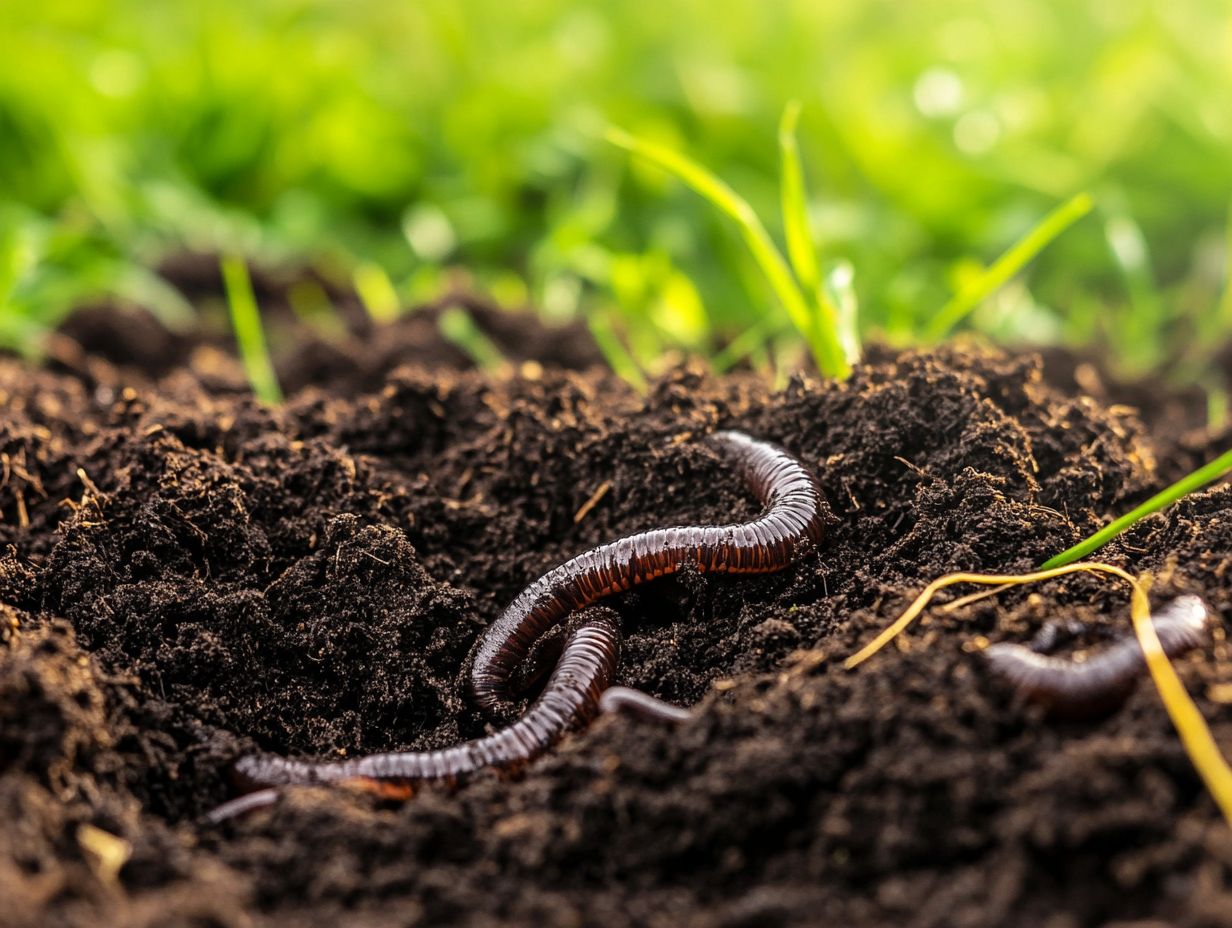
- Use earthworms to improve soil health and fertility, leading to better plant growth and productivity.
- Different species of earthworms play various roles in soil health, so it’s important to identify and understand them for the best results.
- To effectively use earthworms for soil health, create and maintain a proper earthworm farm and follow best practices.
The Importance of Soil Health
Soil health is crucial for the sustainability and productivity of agricultural systems. It acts as the foundation for plant growth and ecological balance.
It includes factors like soil structure, organic matter content, and nutrient cycling, all essential for quality and fertility.
By understanding soil health, you can reduce environmental threats, enhance carbon sequestration, and improve moisture retention. This knowledge supports healthy crops and fosters thriving ecosystems for generations to come.
Benefits of Healthy Soil
Healthy soil is your secret weapon, a vital ecosystem that underpins agricultural productivity and environmental sustainability. It expertly balances nutrient availability and moisture retention, creating ideal conditions for crop growth.
Its structure nurtures beneficial bacteria and fungi, which help plant roots and contribute to carbon buildup.
By implementing practices like crop rotation and bioremediation, you can elevate soil health and achieve lasting agricultural success.
The importance of healthy soil extends beyond immediate crop success; it actively participates in nutrient cycling, ensuring essential minerals are available for your plants. Well-maintained soil captures and retains moisture, especially during dry spells.
Start using sustainable practices today, such as cover cropping and reduced tillage, to enhance soil health. This leads to better crop yields and boosts resilience against pests and diseases. These strategies cultivate a richer soil ecosystem while aligning with sustainable farming principles.
How Earthworms Boost Soil Health
Earthworms are essential for enhancing soil health. They improve nutrient cycling and soil structure through their natural behaviors. Their castings are packed with nutrients, providing vital elements that plants crave.
Their burrowing creates tunnels, promoting aeration and efficient drainage in the soil. This activity not only retains moisture but also fosters a vibrant ecosystem rich in beneficial bacteria and fungi.
Take red wigglers, for instance. These champions excel in composting systems, breaking down organic matter and boosting soil fertility. Their ability to decompose waste transforms nutrients into forms that plants can easily absorb, supporting optimal growth.
The constant movement of earthworms enhances soil structure, a critical factor for healthier crop production. By including earthworm management in your sustainable farming practices, you can increase yields, reduce chemical fertilizer use, and enhance your crops’ resilience to drought.
In short, understanding and nurturing these remarkable creatures can significantly contribute to a more sustainable agricultural environment.
Join the movement for healthier soil by starting your earthworm farm today!
Types of Earthworms
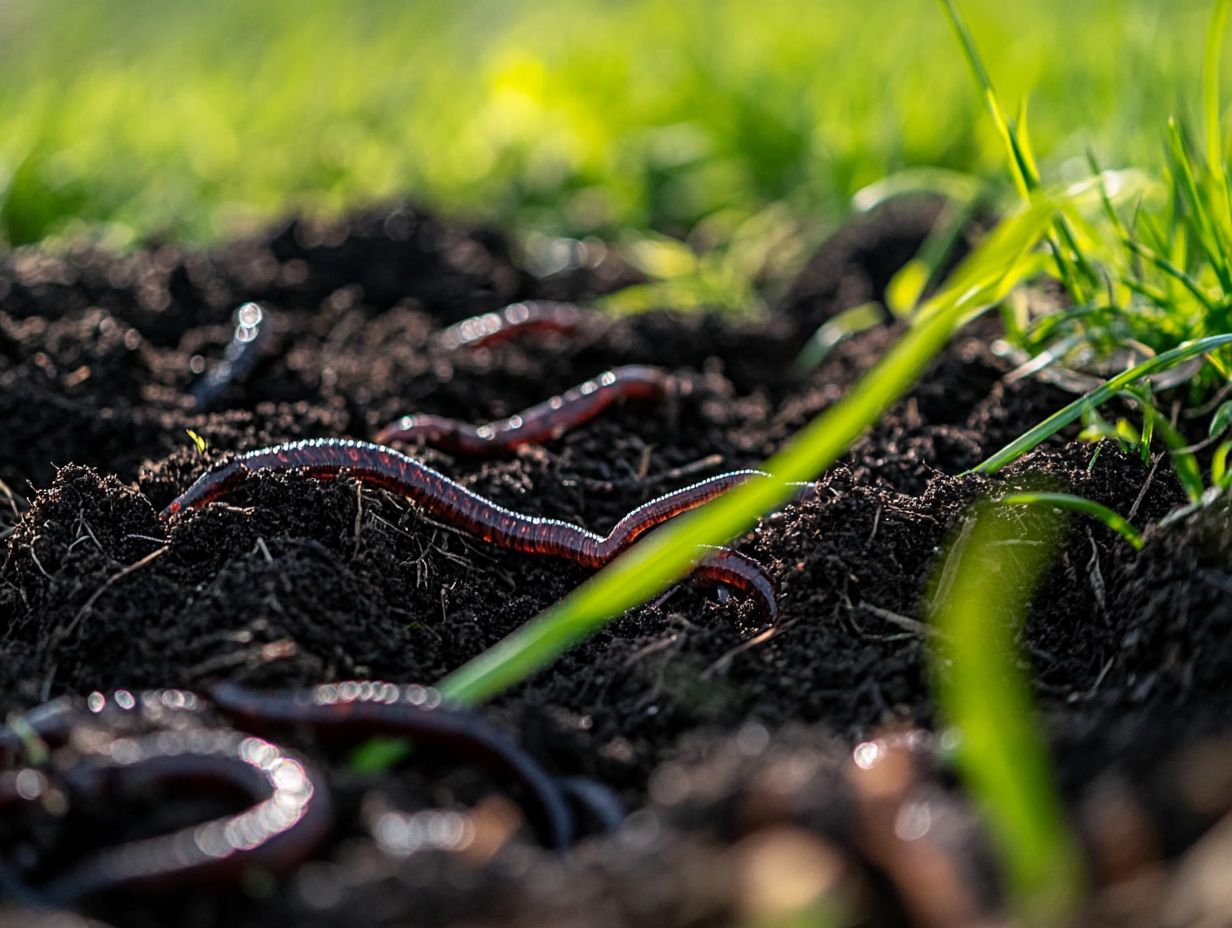
Understanding the various types of earthworms is crucial for you to fully harness their benefits in soil health and agricultural practices. Different species like red wigglers play unique roles in soil health, facilitating the decomposition of organic matter and improving nutrient availability. However, some invasive species can threaten local ecosystems and disrupt soil health. Engaging with agricultural research will illuminate the significance of maintaining healthy earthworm populations and ensuring sustainable land management for the future.
Identifying and Understanding Different Species
Identifying different earthworm species is essential for understanding their unique roles in soil ecosystems and agricultural health. For instance, red wigglers are your go-to allies in worm farming, renowned for their remarkable ability to break down organic matter. Other species contribute significantly to nutrient cycling and soil aeration. Recognizing these differences helps in managing earthworms better for soil health.
The physical characteristics of earthworm species can vary dramatically, often defined by size, color, and segmentation, all crucial for accurate identification. Take Lumbricus terrestris, commonly known as the nightcrawler; its robust size and distinctive clitellum make it a key player in deep soil cultivation.
These remarkable organisms serve a vital ecological function by improving soil structure, facilitating water infiltration, and promoting microbial activity. The benefits of a diverse earthworm population extend into agricultural practices too, where an integrated mix can enhance compost quality and significantly boost crop yields through effective soil enrichment.
Using Earthworms for Soil Health
Harnessing the power of earthworms to enhance soil health is an exciting way to boost sustainable farming. By employing effective composting techniques and applying organic compost, you can tap into the beneficial activities of earthworms to elevate nutrient cycling and improve soil structure.
Earthworms are also vital for cleaning up contaminated land and contribute significantly to bioremediation efforts.
Methods and Techniques
You can use various effective methods to improve soil health with earthworms, with worm farming standing out as one of the most esteemed practices. This approach not only recycles organic waste but also yields nutrient-rich compost that improves soil structure and moisture retention, enhancing agricultural sustainability.
By grasping the best practices for soil management with earthworms, you can achieve remarkable improvements in nutrient cycling and crop productivity.
Beyond worm farming, traditional composting techniques also benefit from the inclusion of earthworms. Integrating these remarkable creatures into your outdoor compost piles expedites the decomposition process, resulting in a finished product abundant in beneficial microorganisms.
Moreover, no-till farming practices, which prioritize minimal soil disturbance, leverage the natural aerating abilities of earthworms. This promotes superior root development and enhances soil fertility.
These diverse methods illustrate that earthworms not only facilitate waste recycling but also play a pivotal role in fostering sustainable agriculture and effective soil management.
Creating and Maintaining an Earthworm Farm
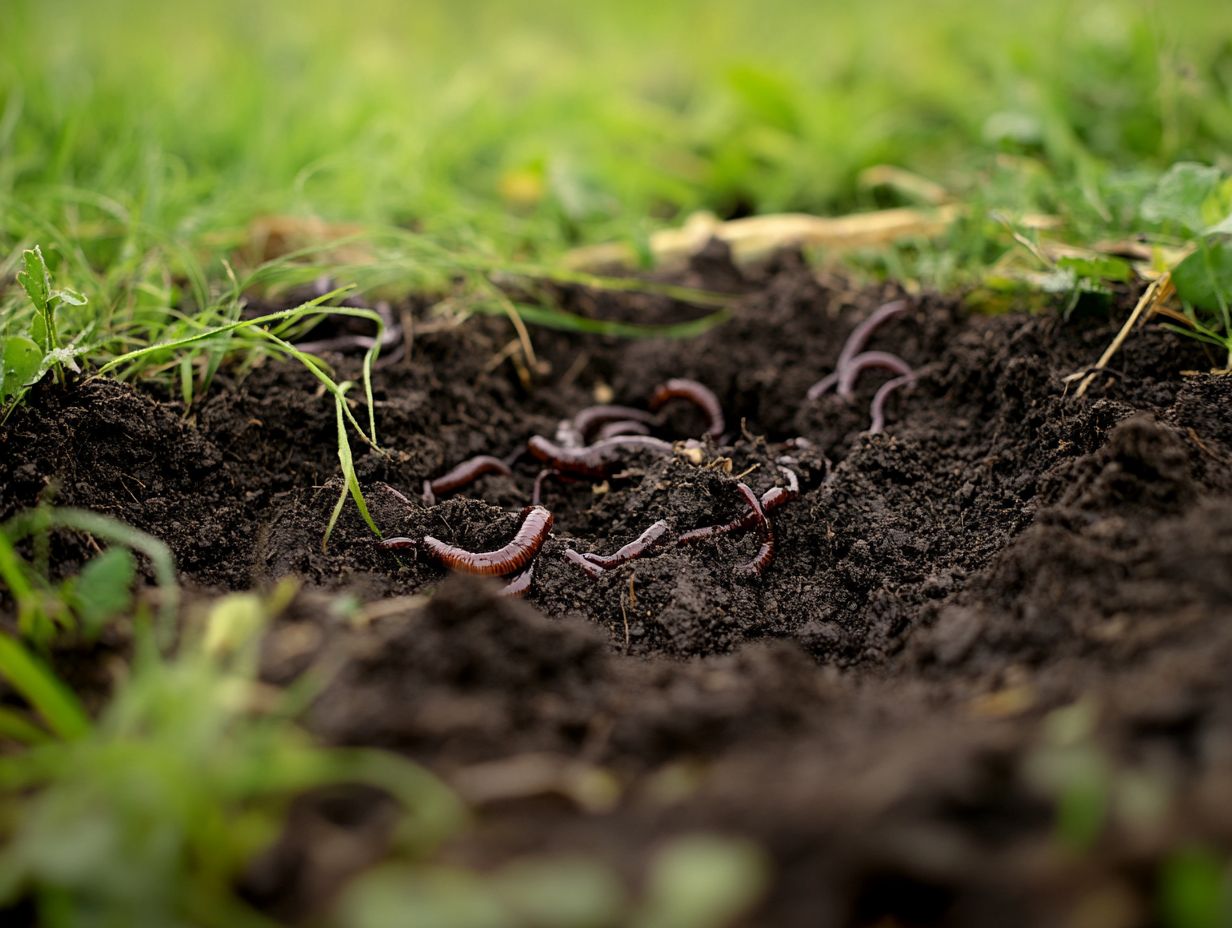
Creating and maintaining an earthworm farm is an exciting way to boost your soil health! By establishing a controlled environment, you can cultivate thriving populations of earthworms that produce nutrient-rich castings, perfect for enriching your soil with organic matter and improving nutrient availability.
This practice not only facilitates effective waste recycling but also bolsters agricultural productivity and fosters ecological balance.
Step-by-Step Guide
Establishing an earthworm farm involves several steps. These will ensure effective vermicomposting and enhance soil health.
Start by selecting an appropriate container that allows for both aeration and drainage. Prepare bedding using materials like shredded paper or cardboard to create a welcoming habitat for your earthworms.
This bedding isn t just a cozy retreat; it also serves as a vital food source for the worms. Once your container is set up, establish a consistent feeding schedule. Introduce kitchen scraps like vegetable peels and coffee grounds, but do so in moderation to avoid overwhelming your wriggly friends.
Monitoring moisture levels is crucial. Keep the bedding slightly damp but avoid sogginess. Regularly check for pests or unpleasant odors, as these can signal an unhealthy environment. Following these practices creates a self-sustaining ecosystem that nurtures healthy worms and enhances soil quality, supporting sustainable farming methods.
Tips for Maximizing Earthworm Benefits
Implementing best practices is essential for maximizing the benefits of earthworms! To truly achieve this, focus on soil management and sustainable farming. Recognizing the specific needs of earthworms like ensuring adequate moisture, providing a steady supply of organic matter, and protecting them from soil compaction can greatly enhance their role in promoting soil health.
By seamlessly integrating earthworm activities into your agricultural practices, you can improve nutrient cycling and moisture retention. This ultimately elevates crop productivity while contributing positively to environmental health.
Best Practices for Optimal Soil Health
Implementing best practices for optimal soil health means integrating earthworm activity with sustainable agricultural methods. This enhances organic matter and nutrient cycling.
These practices support moisture retention, improve soil structure, and promote a thriving ecosystem that benefits both your crops and the environment. Recognizing the interconnectedness of soil health, earthworms, and agricultural practices ensures long-term productivity and sustainability.
For instance, adopting cover cropping can significantly boost earthworm populations. These crops provide both organic matter and shelter. Embracing no-till farming further safeguards the delicate structure of the soil, allowing earthworms to thrive while effectively aerating the ground.
Practicing crop rotation prevents nutrient depletion and fosters a diverse habitat for these beneficial organisms. Each of these strategies plays a crucial role in enhancing nutrient cycling by breaking down organic material, improving moisture retention, and nurturing robust soil life and healthier plant systems.
Frequently Asked Questions
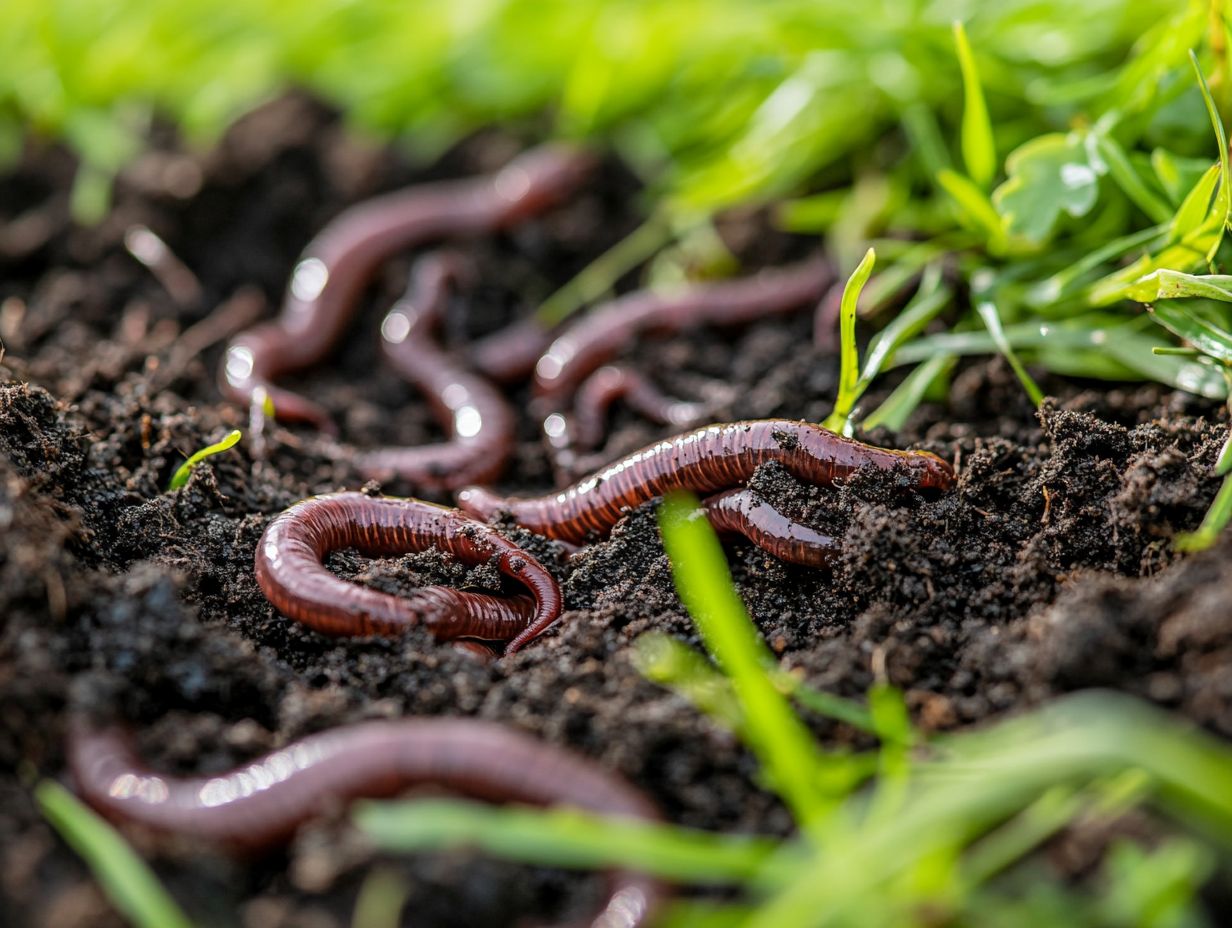
How do earthworms benefit soil health?
Earthworms can improve soil health by aerating the soil, increasing nutrient availability, and enhancing plant growth. They also help to break down organic matter, making nutrients more accessible to plants.
What are some methods to utilize earthworms for soil health?
One way to utilize earthworms for soil health is through vermicomposting, which involves using worms to compost waste and break down organic matter into nutrient-rich compost. Another method is to add earthworms directly into the soil, where they will naturally aerate and enrich the soil.
Which types of earthworms are best for soil health?
Red wigglers and nightcrawlers are commonly used for soil health as they are efficient at breaking down organic matter and improving soil structure. However, any type of earthworm can contribute to soil health.
How do I create a vermicompost system?
To create a vermicompost system, you will need a container with drainage holes, bedding material such as shredded newspaper or coconut coir, and a population of earthworms. Add food scraps and other organic matter to the bedding, and the worms will break it down into nutrient-rich compost.
What are the signs of healthy soil due to earthworms?
If you have a healthy population of earthworms in your soil, you should see increased plant growth and healthier-looking plants. You may also notice improved soil structure, with better drainage and aeration.
Can too many earthworms be harmful to soil health?
Earthworms are great for soil health, but too many can create problems. If their population grows too large, they might eat up too much organic matter and leave the soil poor.
It s crucial to keep a balanced number of earthworms for the best soil health. This ensures your soil remains rich and thriving for plants.

